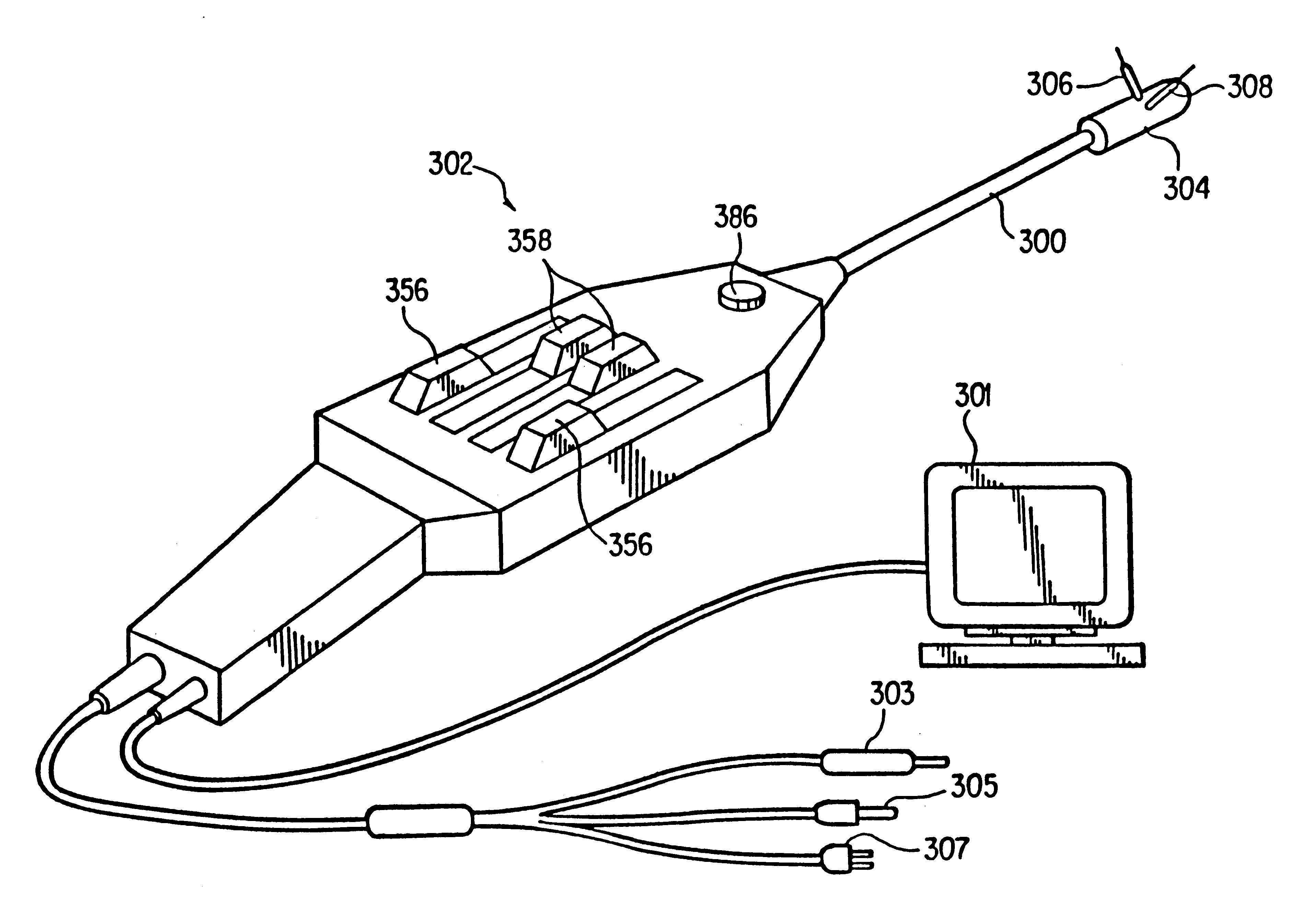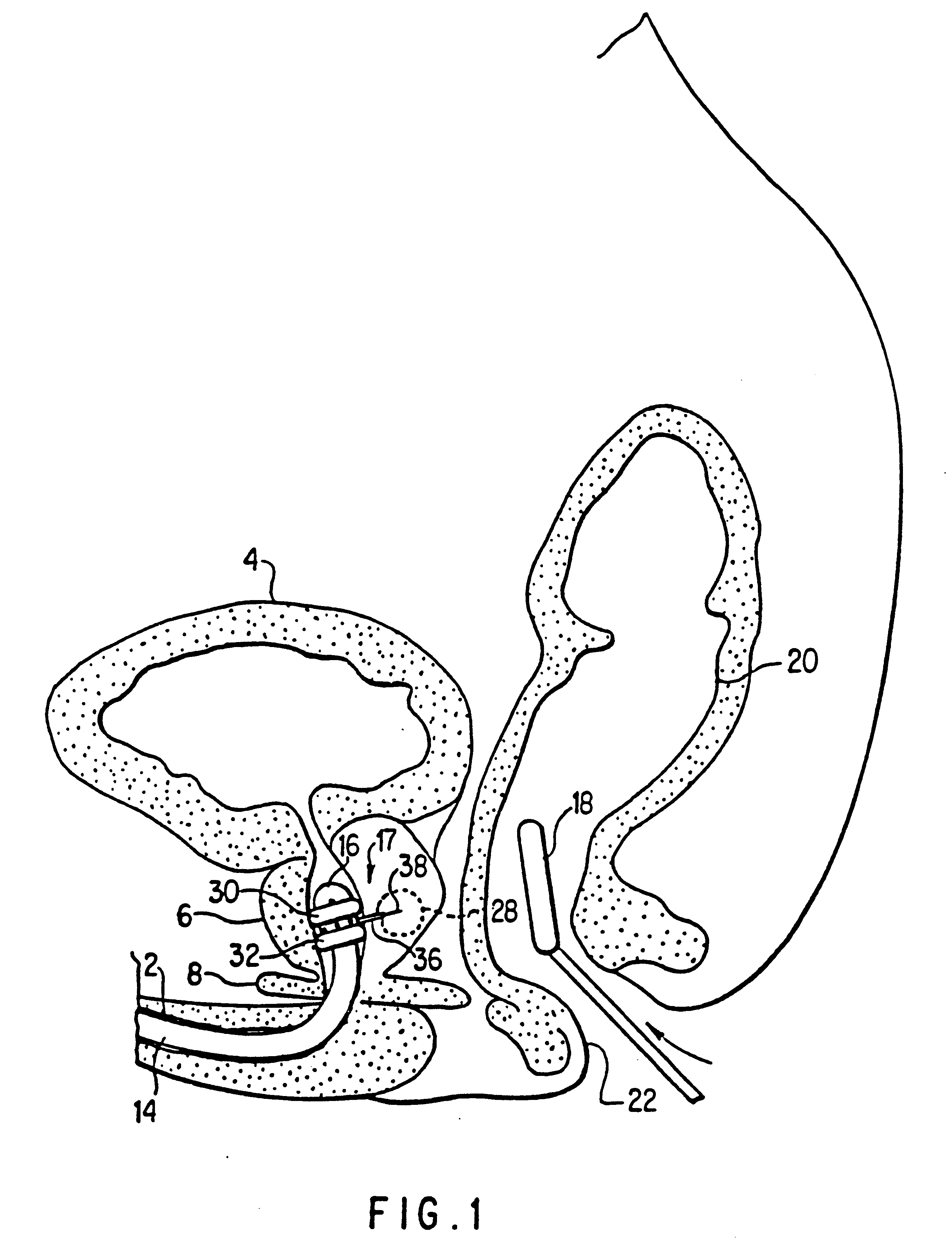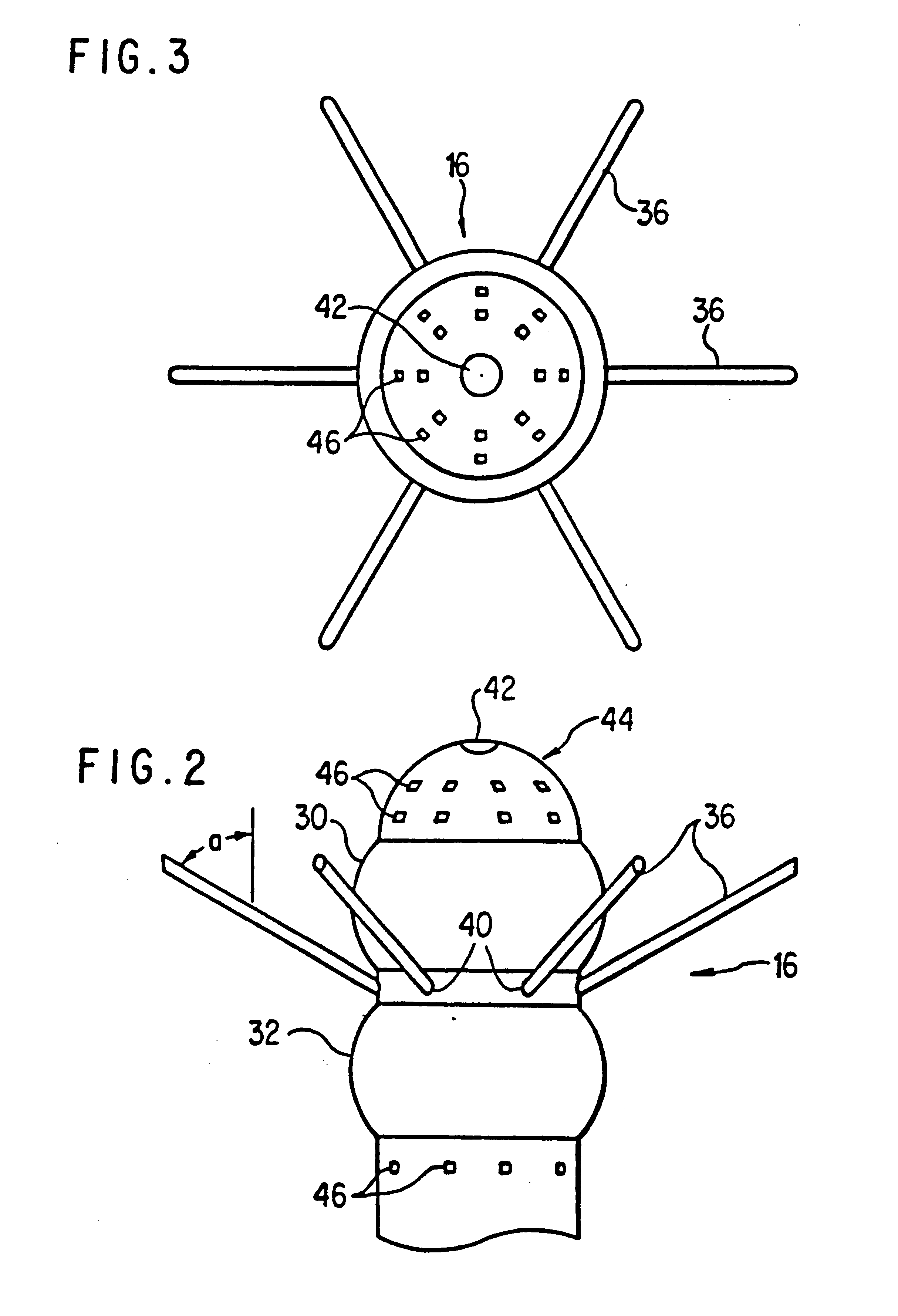Medical probe device and method
a medical probe and probe technology, applied in the field of medical probe devices and methods, can solve the problems of frequent urination, difficult precise placement of treatment probes, obstruction of urinary tract, etc., and achieve the effect of minimizing trauma and achieving greater medical benefits
- Summary
- Abstract
- Description
- Claims
- Application Information
AI Technical Summary
Benefits of technology
Problems solved by technology
Method used
Image
Examples
Embodiment Construction
The device of this invention provides a precise controlled positioning of a treatment stylet in a tissue targeted for treatment, destruction or sampling from a catheter positioned in the vicinity of the target tissue.
The term “stylet” as used hereinafter is defined to include both solid and hollow probes which are adapted to be passed from a catheter port through normal tissue to a target tissue. The stylet is shaped to facilitate easy passage through tissue. It can be a solid wire, thin rod, or other solid shape or it can be a thin hollow tube or other shape having a longitudinal lumen for introducing fluids to or removing materials from a site. The stylet can also be a thin hollow tube or other hollow shape, the hollow lumen thereof containing a reinforcing or functional rod or tube such as a laser fiberoptic cable. The stylet preferably has a sharpened end to reduce resistance and trauma when it is pushed through tissue to a target site.
The stylet can be designed to provide a var...
PUM
 Login to View More
Login to View More Abstract
Description
Claims
Application Information
 Login to View More
Login to View More - R&D
- Intellectual Property
- Life Sciences
- Materials
- Tech Scout
- Unparalleled Data Quality
- Higher Quality Content
- 60% Fewer Hallucinations
Browse by: Latest US Patents, China's latest patents, Technical Efficacy Thesaurus, Application Domain, Technology Topic, Popular Technical Reports.
© 2025 PatSnap. All rights reserved.Legal|Privacy policy|Modern Slavery Act Transparency Statement|Sitemap|About US| Contact US: help@patsnap.com



